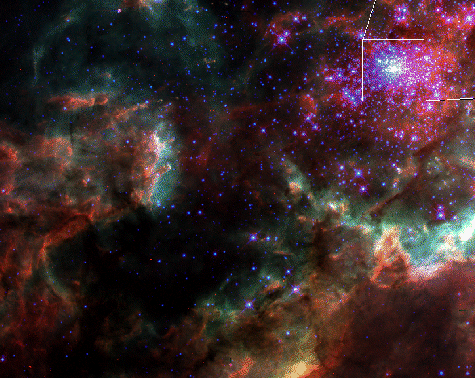
|
Explanation: In the center of 30 Doradus lies a huge cluster of the largest, hottest, most massive stars known. The center of this cluster, known as R136, is boxed in the upper right portion of the above picture. The gas and dust filling the rest of the picture is predominantly ionized hydrogen from the emission nebula 30 Doradus. R136 is composed of thousands of hot blue stars, some about 50 times more massive than our Sun. 30 Doradus and R136 lie in the LMC - a satellite galaxy to our own Milky Way Galaxy. Although the ages of stars in R136 cause it to be best described as an open cluster, R136's density will likely make it a low mass globular cluster in a few billion years.
|
January February March April May June July August September October November December |
| ||||||||||||||||||||||||||||||||||||||||||||||||
NASA Web Site Statements, Warnings, and Disclaimers
NASA Official: Jay Norris. Specific rights apply.
A service of: LHEA at NASA / GSFC
& Michigan Tech. U.
Based on Astronomy Picture
Of the Day
Publications with keywords: LMC - open cluster - globular cluster - 30 Doradus
Publications with words: LMC - open cluster - globular cluster - 30 Doradus
See also:
- APOD: 2025 September 5 B 47 Tucanae: Globular Star Cluster
- APOD: 2025 August 14 B M13: The Great Globular Cluster in Hercules
- APOD: 2025 August 7 B The Double Cluster in Perseus
- APOD: 2025 July 26 B Globular Cluster Omega Centauri
- NGC6366 vs 47 Ophiuchi
- APOD: 2025 April 28 B Gum 37 and the Southern Tadpoles
- Open Star Clusters M35 and NGC 2158
